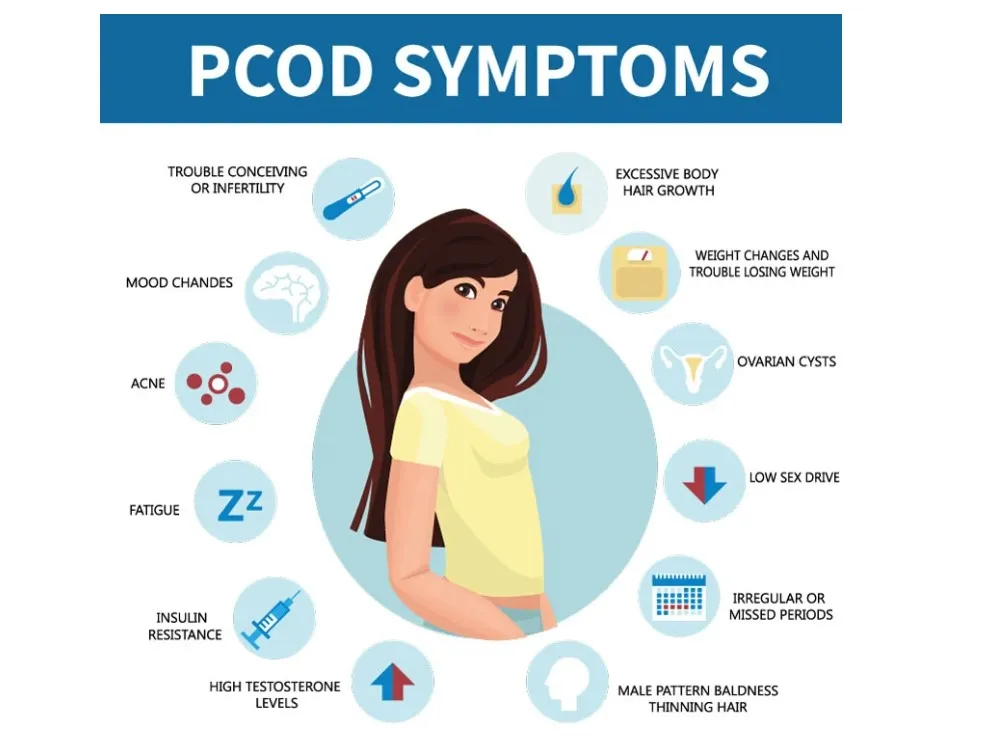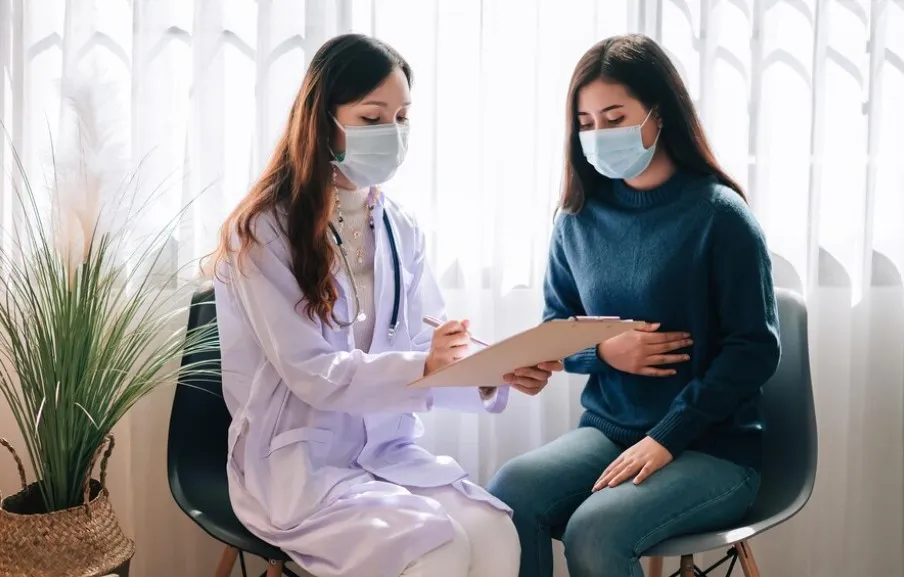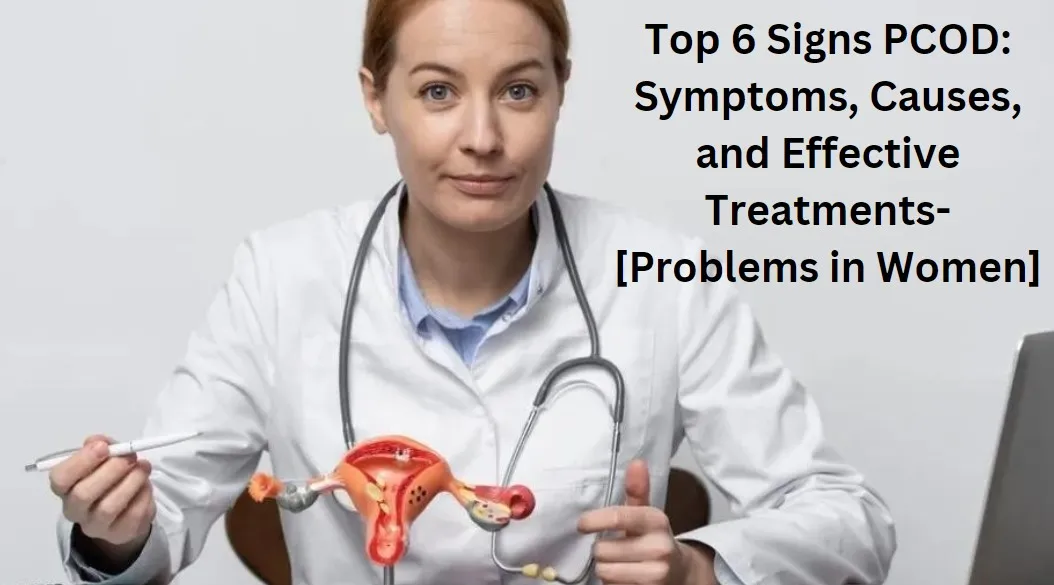PCOD- Understanding its symptoms, its effecting causes, and available treatments. Learn about home cures and dietary measures for PCOD and its effect on your overall well-being.
Introduction to PCOD
PCOD mean –Polycystic Ovarian Disease is one of the common endocrine disorders that affect a large population of women across the world. This is a condition that is associated with the formation of several small cysts in the ovaries and has a number of effects on health. It is important to understand how PCOD works so that its symptoms and treatments can be mitigated.
Thus, one of the most noticeable signs of PCOD is the abnormality in the menstrual cycle. PCODs result in irregular or delayed menstrual cycles, which can be painful and inconvenient for affected women. Furthermore, P COD may cause high levels of androgens that may cause acne, hirsutism, and thinning of scalp hair. Such changes might be linked to one’s self-image and mental well-being, which is why they need to be dealt with as soon as possible.
Though the definite cause of P COD is not known, several factors are considered as potential causes of the disease. It consists of components like genetic susceptibility, insulin antagonism, and inflammation. High levels of insulin also contribute to increased androgen production thus worsening the P COD symptoms. Knowing these fundamental causes is essential for offering an optimal P COD treatment plan.
Treating P COD can be complex in many cases. These can be hormonal contraceptives for the regulation of menstrual cycles and medications for the regulation of insulin. However, lifestyle changes are an integral part of the management of P COD. By taking low glycemic index meals combined with whole foods, lean protein, and healthy fats, P COD symptoms can be greatly enhanced. The intake of processed foods and sugars should also be minimized.
Another fundamental aspect of managing P COD is through engaging in regular physical activity. Physical activity increases the uptake of insulin, supports weight loss, and benefits general well-being. Other activities like yoga and meditation should also be integrated to enhance hormone balance and overall health.
Living with P COD is not easy but it is a process that needs time and hard work. Early identification of the signs of P COD and comprehensive treatment allows women to control the illness and improve their quality of life.
Symptoms of PCOD
PCOD has diverse symptoms and hence can be difficult to diagnose and manage. The signs of PCOD can be categorized as minor or major, and it is essential to be aware of these signs in order to receive proper treatment for P COD.

An irregular menstrual cycle is one of the defining characteristics of the P COD condition. It is common for women with P COD to have irregular, scanty, or even missing periods. This is disheartening and may cause other complications within the body if not corrected. Another typical sign is hyperandrogenism, which is defined as an increase in male androgen levels. This can lead to hirsutism, which implies thick hair growth on the face and body, which is embarrassing and affects self-esteem.
Skin problems such as acne and oily skin are also common in women suffering from P COD. PCOD brings hormonal changes that cause acne, and such acne is not easily treatable using regular procedures. Also, most women with P COD complain of alopecia, which is hair loss mostly on the head. This must be one of the most emotionally testing facets of the disorder.
Another P COD symptom is weight gain and difficulty of losing weight. A frequent characteristic of P COD is insulin resistance, which causes difficulties in achieving weight loss goals. This in turn hampers other PCOD symptoms and may cumbersomely influence the management of P COD.
Furthermore, P COD causes dark skin patches mainly on the neck, groin and under the breast areas. There is another sign of insulin resistance called acanthosis nigricans.
The treatment of these symptoms depends on a wide range of methods. The right foods to consume by individuals suffering from P COD include complex carbohydrates foods, lean proteins, and other good fats that help in reducing the symptoms. Exercise is also very important as it helps to influence insulin resistance and prevent obesity.
What is different between PCOS & PCOD
P COD (Polycystic Ovarian Disease) and PCOS (Polycystic Ovary Syndrome) are two disorders of the female reproductive system. P COD can be defined as the state in which a woman has many small cysts on her ovaries and she has irregular periods. On the other hand, PCOS involves PCOD symptoms along with hormonal disorders and metabolic problems such as high insulin resistance. In summary in Tabulated below.
| Aspect | PCOS | P COD |
| Definition | An endocrine disorder originating from increased levels of androgens produced by the ovaries | A hormonal imbalance due to overproduction of immature eggs in ovaries |
| Impact on Fertility | Less effect on fertility; Pregnancy is possible but delayed | Further notable, even though pregnancy is possible with a chance of miscarriage, preterm labor |
| Complications | May lead to health problems such as diabetes, heart ailments, hypertension, etc. | PCOD doesn’t cause any severe health complications |
| Treatment | Can be treated only with hormonal medication | Can be easily treated with lifestyle changes ranging from dietary modifications to stress reduction |
| Prevalence in India | Quite surprising, but many women suffer from PCOS, around 9.13% of menstruating Indian women | PCOD diseases mainly affect women currently, with around 22.5% of menstruating Indian women suffering from PCOD |
Top 5 Signs of PCOD
PCOS is, in fact, a multi-factorial condition for which researchers have yet to pinpoint a definitive explanation. It is thought to have interaction with hereditary, hormonal and life cycle elements. Here are the main factors thought to contribute to PCOS: Here are the main factors thought to contribute to PCOS:

Hormonal Imbalance- Lack of regular menstrual cycles, high level of androgens, insulin resistance, increased concentration of luteinizing hormone (LH) and presence of follicle-stimulating hormone (FSH) are hallmarks of PCOS. Hypoglycemic inflexion point People with PCOS are often registered to have insulin resistance hence high levels of insulin in women. This in turn may lead to the overproduction of male hormones by the ovaries such as testosterone and irregular or abnormal release of an egg.
Genetics- PCOS also has a clear genetic basis and therefore has numerous symptoms and its prevalent in women. Studies have also revealed that women with a family history of PCOS have also been seen to be much more susceptible to developing the disease. Some of the genes involving insulin signalling, hormone biosynthesis, and ovarian development have been identified as possible links to Ca Paw PCOS.
Insulin Resistance- Another abnormality in the endocrine system observed in PCOS is insulin resistance, which implies that some cells in the body are not as affected by insulin as they should be. This can precipitate high levels of insulin, which further triggers the production of excessive amounts of androgens by the ovaries. Obesity, excess weight and poor weight loss profile are also the characteristic features of PCOS or polycystic ovary syndrome and insulin resistance is linked with all these factors.
Hormonal Factors- Hormonal dysregulation and hyperandrogenism Integral to the development of the PCOS, include high levels of LH/ FSH ratios and elevated androgens. These hormonal imbalances contribute to irregular menstruation and aberrated ovulation.
Environmental Factors- Specific causative factors include; endocrine-disrupting chemicals e. g. Some chemicals that are commonly used in plastics, pesticides, and cosmetics such as bisphenol A, phthalates have been found to disturb hormone balance and there may be a link to increased predisposition to PCOS.
Lifestyle Factor-There are certain known risk factors that are attributed to PCOS such as obesity and leading a sedentary lifestyle. Another thing that exacerbates the symptoms of PCOS is obesity; obesity affects Insulin sensitivity and hormonal balance that is already disturbed in PCOS. On the other hand, refraining from unhealthy diets, indulging in regular exercise, and exercising an ideal body weight are some of the ways of keeping PCOS under check.
Although these triggers must be recognized to relate to PCOS, the way they join together and influence the development of this condition is not clear in all females. This is where the importance arises of individualized treatment of PCOS, and its approach that includes both hormonal and metabolic components.
Diagnosis of PCOD
As for the diagnosis of PCOS, the gynaecologist will conduct the patient’s history, a complete clinical examination, and some tests.

Medical History and Symptoms- The first step requires the doctor to ask several questions concerning the medical history, other notable characteristics such as the menstrual history and cycle, hirsutism, acne, weight gain or loss and any other related complaints or issues.
Physical Examination- An examination of the physical body may be done to diagnose PCOS or features like hirsutism, acne, and insulin resistance (e. g. This is due to skin manifestations like ( Acne vulgaris, skin tags, and darkened skin patches).
Blood Tests-Serum tests are commonly used to assess hormone concentrations. These include:
Luteinizing Hormone (LH) and Follicle-Stimulating Hormone (FSH): PCOS women are commonly characterized by an increased LH/FSH ratio.
Testosterone-From this point, increased testosterone levels suggest androgen excess, which is characteristic of PCOS.
Insulin and Glucose Levels- We have seen how PCOS is linked with several metabolic disorders including diabetes; therefore, it is recommended that women diagnosed with the condition should undergo regular testing for insulin resistance and blood glucose.
Ultrasound-Ovaries, for example, can usually be viewed with the help of transvaginal ultrasound. A key feature of PCOS is the abnormal growth of small follicles (cysts) on the ovaries and this can be confirmed through the use of ultrasound.
Exclusion of Other Conditions- The doctor may also want to conduct further tests that may help exclude other conditions that can overlap with PCOS or that can cause similar symptoms such as thyroid disorders or adrenal gland disorders.
Diagnostic Criteria-PCOS has specific diagnostic criteria, most of which are as follows:
He said that these may include irregular menstrual cycles or the absence of menstrual periods.
Hormones such as Testosterone, acne, excessive body and facial hair growth, and irregular menstruation.
This can be confirmed through ultrasound where the ovaries are enlarged and have a granular texture characterized by multiple small follicles in PCOS patients.
One has to remember here that PCOS affects women in very complex ways and each woman with this condition may have a different set of complaints and a different set of biochemical values. The management includes clinical assessment supported by blood count, electrolyte balance and radiological imaging relevant to the patient’s symptomatology.
Treatment Options for PCOD
Treatment of P COD focuses on symptom control, hormonal balance and generally boosting the health of the patient. The management of P COD therefore varies depending on the symptoms, severity and fertility desires of a given patient.
Lifestyle Modifications-
Diet- It is important to manage the type of foods one has to eat during PCOD. This has to do with taking into consideration on whole foods, lean proteins, healthy fats and complex carbohydrates. Do not take foods rich in sugar and refined carbohydrates, rather, take foods with low glycemic index.
Exercise- Physical exercise also facilitates the enhancement of insulin levels, regulation of body weight, and general health. Strive to have both cardiovascular workouts and muscle-building activities.
Stress Management solutions like the practice of yoga, meditation, deep breathing, and mindfulness help regulate the secretion of stress hormones.
Medications-
Birth Control Pills- Contraceptive pills may control menstrual cycles, decrease androgen production, and hence, contribute to acne and hirsutism.
Anti-Androgen Medications- There are medications, such as spironolactone, that interfere with the action of androgens and, therefore, contribute to the disappearance of such symptoms as pimples and excessive body hair.
Insulin-Sensitizing Medications- Metformin has therefore been recommended to enhance insulin sensitivity, regularize menstrual cycles and manage weight.
Fertility Treatments-
Ovulation Induction- Some of the drugs used in the treatment of fertility include clomiphene citrate or letrozole in women who want to conceive.
In Vitro Fertilization (IVF)- IVF and other reproductive therapies could be used to treat women with P COD-related infertility.
Surgical Interventions-
Ovarian Drilling- In some instances, a procedure known as ovarian drilling can be carried out in order to decrease the level of androgens as well as to facilitate ovulation.
Cyst Removal- Laparoscopic cystectomy or oophorectomy might be required for large ovarian cysts that can significantly impair the patient’s health.
Complementary Therapies-
Acupuncture- There are women who have reported relief of their PCOD symptoms through acupuncture, particularly in menstrual problems and stress.
Herbal Supplements- Some of the herbal supplements such as chasteberry (vitex) or saw palmetto may contain properties that help balance hormones; however, it should be taken under the doctor’s recommendation.
Women who are suffering from PCOD should consult their healthcare workers often to get the proper management plan. This means that PCOD requires constant check-ups, regular alteration of the chosen life approach, and continuous conversation with physicians.
PCOD-Final Conclusion
P COD treatment requires a comprehensive approach that tackles the medical, psychological and social aspects of the condition. The process of living with PCOD starts with knowing what it is, becoming aware of the variety of signs and getting checked early.
Diet control, exercise, stress reduction, and weight loss are cornerstones of the management of P COD. These lifestyle changes do not only help reduce symptoms but also improve the quality of life.
Hormonal pills, operations when required, and other treatments like acupuncture or using certain herbs also help in controlling some of the P COD symptoms and for better fertility health.
Counselling, support groups, and mental health services are particularly important for meeting the psychological needs of women affected by P COD.
The skills required for long-term management of P COD therefore include constant follow-up, education, support for patients, and teamwork with healthcare workers. This means that women with P COD can manage the condition by consulting their healthcare team, being informed about the available treatment options and engaging the appropriate support networks.
In the most basic sense, P COD is about exercising control, and strength and adapting to what personally suits a woman. With commitment, knowledge, and care, women with P COD can overcome the challenges of the issue and lead a fulfilling life.
FAQS-PCOD
What is the difference between P COD and PCOS?
P COD stands for Polycystic Ovarian Disease which indicates the condition where the ovaries contain numerous small cysts and is characterized by irregular menstrual cycles. PCOS is a type of P COD; however, it also causes hormonal disturbances and metabolic problems such as insulin resistance.
What is the cause of PCOD?
The actual cause of PCOD is not known, however, there are indications that genetic predisposition, hormonal imbalance, insulin resistance, and diet and exercise habits may play a role.
How to overcome the PCOD problem?
Lifestyle modification is effective for P COD management. This consists of exercising, maintaining a balanced diet, and possibly the use of drugs to control periods and the signs that accompany it.
Can a P COD girl get pregnant?
Yes, any woman with PCOD can get pregnant as long as her condition is well-managed. It may be necessary for couples to seek fertility treatments.
What is the PCOD problem in females?
P COD is a common condition among women that affects the ovaries and leads to hormonal fluctuations, irregular periods, formation of cysts as well as insulin resistance.
Symptoms of P COD problem in females?
Common signs associated with P COD include; irregular menstrual cycles, weight gain, hirsutism, acne and difficulty in conceiving. The signs and symptoms of P COD include irregular menstrual cycles, weight gain, hirsutism, acne, and subfertility.
MUST READ- WHY HEALTH INSURANCE MATTERS IN ISSUE











